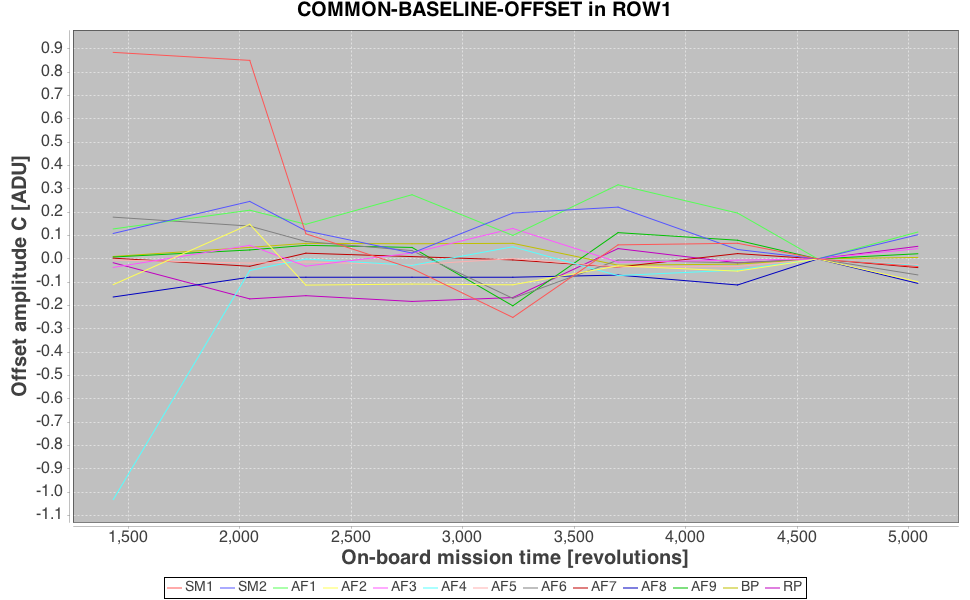3.4.7 CCD bias and non-uniformity
Author(s): Nigel Hambly
As mentioned previously in Section 3.3.2 concerning bias, on-ground monitoring of the electronic offset levels is enabled via prescan telemetry that arrives in one-second bursts approximately once per hour per device. The daily processing chain simply analyses these data by recording robust mean and dispersion measures for each burst for each device, and low-order spline interpolation is employed to provide model prescan offset levels at arbitrary times when processing samples from the CCDs. In IDU the task of producing these ‘bias records’ is repeated in order to incorporate any delayed or misplaced data not available to the corresponding time–limited IDT process. Regarding the offset non-uniformities mentioned previously, while periodic recalibration takes place every 3 to 4 months in–orbit, the effects appear to be stable at the level of a few tenths of an ADU. Figure 3.14 illustrates this for the baseline offset variations (see Hambly et al. 2018b for further explanation) in the CCDs of row 1 from all suitable calibration periods to date. Furthermore mild degeneracies exist between a handful of the calibration parameters for some of the effects so it is not possible to interpolate between calibration periods. Previous processing cycles used the most recent calibration available for any given processing period to correct those features in the data (Section 1.3.4 and Table 1.14). For Gaia EDR3 we have used the single library derived from the December 2016 in–orbit calibration run to correct offset anomalies in order to avoid introducing any low–level calibration noise.
